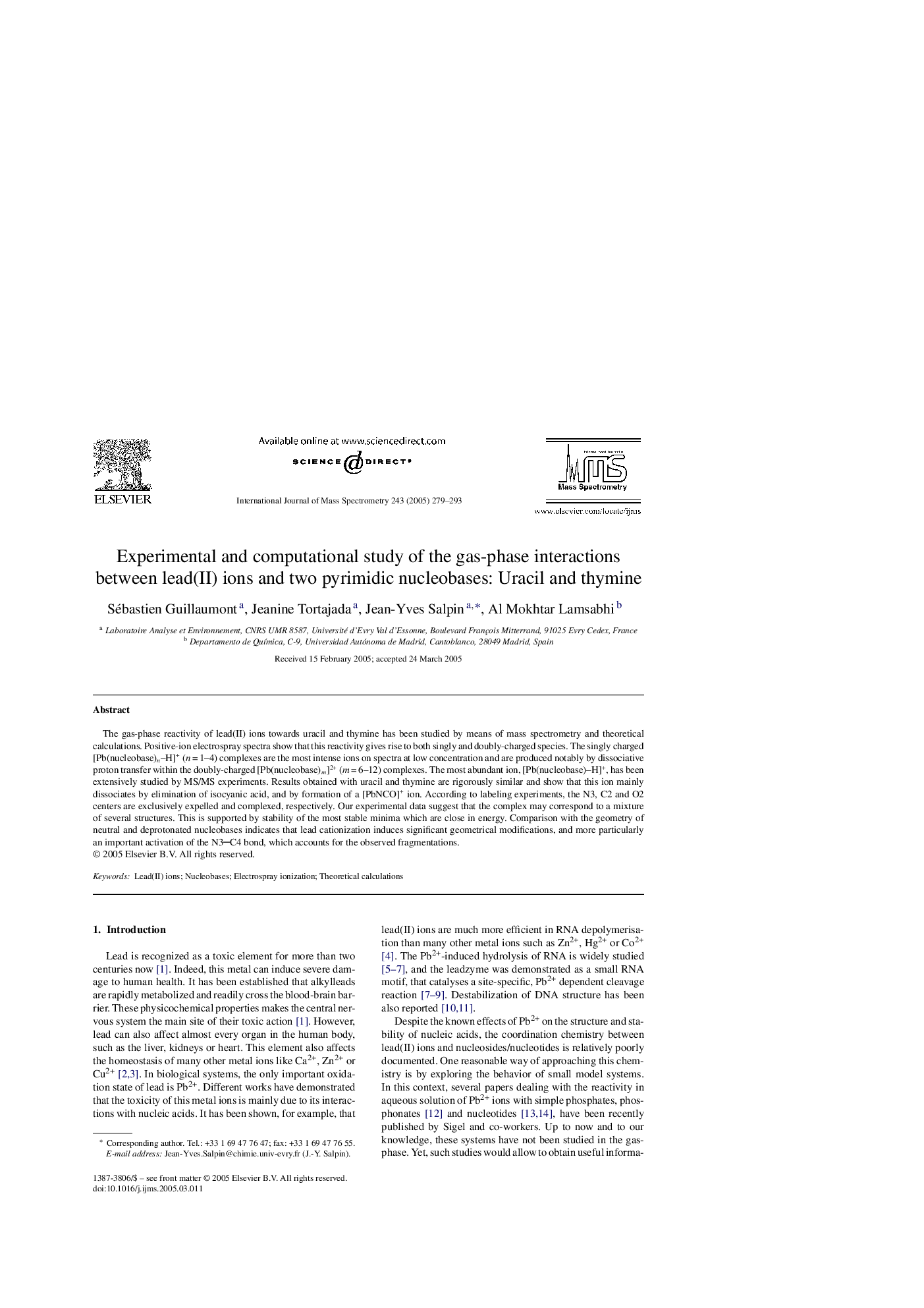| Article ID | Journal | Published Year | Pages | File Type |
|---|---|---|---|---|
| 9746675 | International Journal of Mass Spectrometry | 2005 | 15 Pages |
Abstract
The gas-phase reactivity of lead(II) ions towards uracil and thymine has been studied by means of mass spectrometry and theoretical calculations. Positive-ion electrospray spectra show that this reactivity gives rise to both singly and doubly-charged species. The singly charged [Pb(nucleobase)n-H]+ (n = 1-4) complexes are the most intense ions on spectra at low concentration and are produced notably by dissociative proton transfer within the doubly-charged [Pb(nucleobase)m]2+ (m = 6-12) complexes. The most abundant ion, [Pb(nucleobase)-H]+, has been extensively studied by MS/MS experiments. Results obtained with uracil and thymine are rigorously similar and show that this ion mainly dissociates by elimination of isocyanic acid, and by formation of a [PbNCO]+ ion. According to labeling experiments, the N3, C2 and O2 centers are exclusively expelled and complexed, respectively. Our experimental data suggest that the complex may correspond to a mixture of several structures. This is supported by stability of the most stable minima which are close in energy. Comparison with the geometry of neutral and deprotonated nucleobases indicates that lead cationization induces significant geometrical modifications, and more particularly an important activation of the N3C4 bond, which accounts for the observed fragmentations.
Related Topics
Physical Sciences and Engineering
Chemistry
Analytical Chemistry
Authors
Sébastien Guillaumont, Jeanine Tortajada, Jean-Yves Salpin, Al Mokhtar Lamsabhi,
